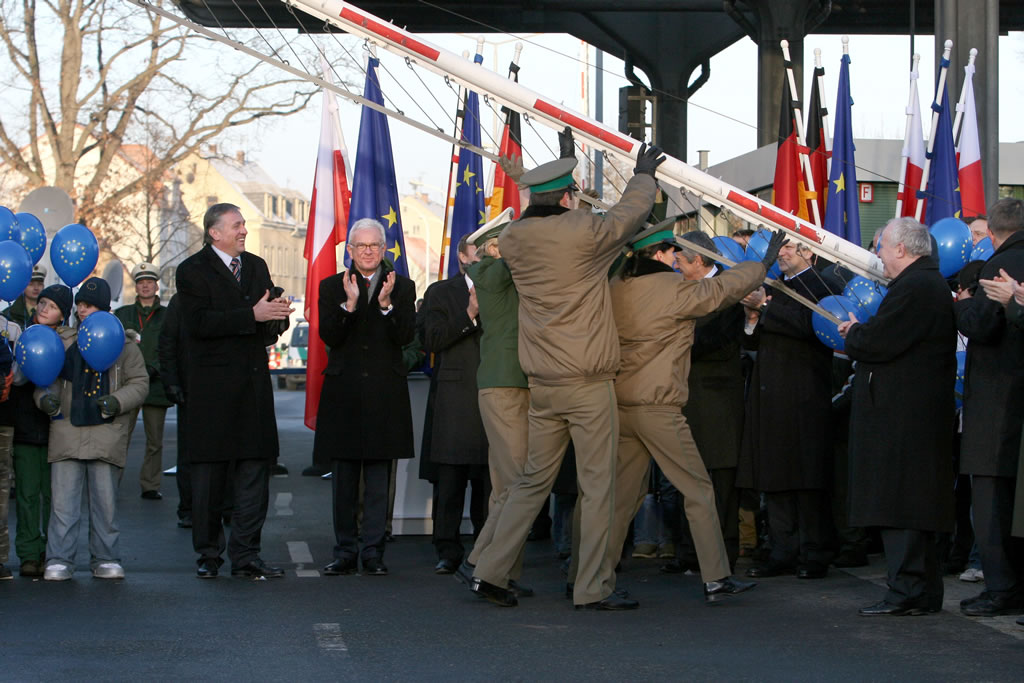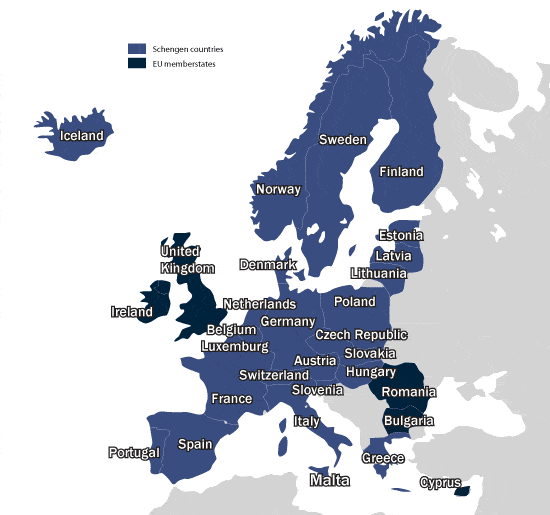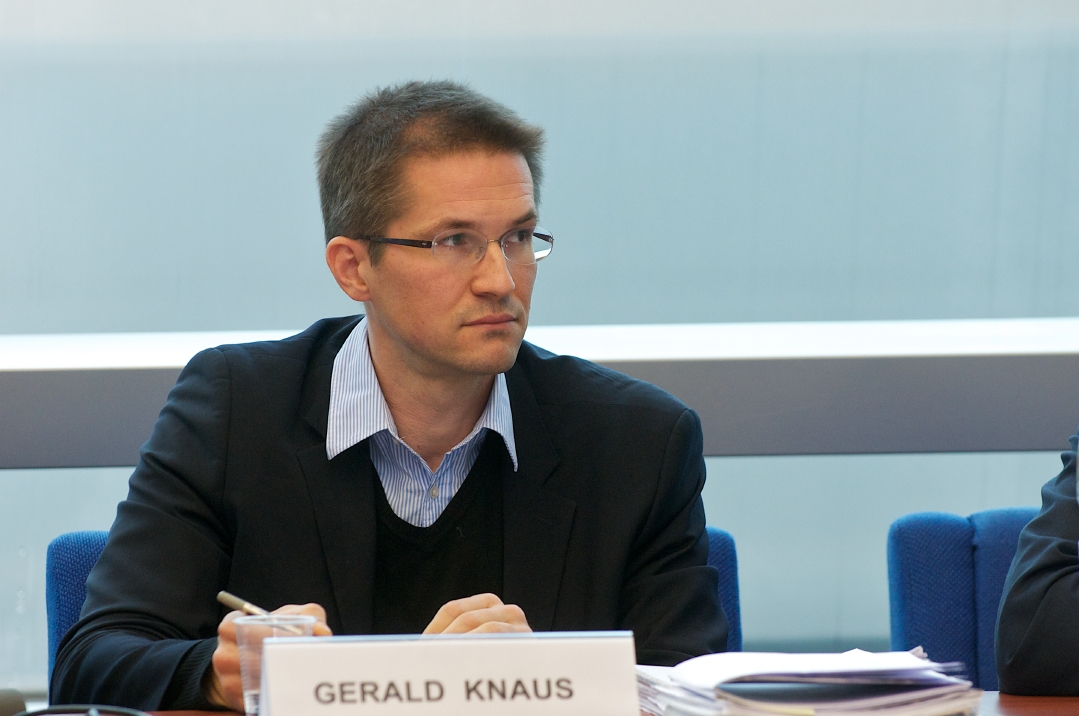
On 10 February I was invited to speak at an informal meeting of policy planning directors from the foreign ministries of the Council of Europe member states in Strasburg.
In my presentation I focused on false ideas of European decline, the opportunities offered by developments in Turkey, and how these contradict notions of diminishing EU soft power in the past decade, and the power of a promise of inclusion for strengthening reform agendas.
The meeting was followed by a working lunch with Thorbjørn Jagland, Secretary General of the Council of Europe.
Please read my contribution here:
Introduction
As an analysis of the politics of the future is part of our business, I would like to start with a few reflections on the nature of predictions. I will then suggest some European macro trends for the forthcoming ten years, in particular the debate on Europe’s decline. In conclusion I will offer reflections on European soft power which is at the heart of European institutions like the Council of Europe, the European Union and others.
Several of the examples that I will use come from Turkey as I have been working and living there for six years. Furthermore, the issue of Turkey is at the heart of the current debate in Europe in both the relationship between Europe and Turkey and the relationship between European culture and the question of Islam and secularism.
The difficult business of prediction
In 2005, Philip Tetlock, an American political psychologist, published research which tracked the predictions of 284 leading policy experts in the United Sates over several years, noting some 28,000 predictions about the political future. He compared these with other benchmarks for accuracy.
His conclusions on how often the policy experts were right were sobering. First of all, it made very little difference to the accuracy of the predictions whether the experts were liberal or conservative, old or young, economists or lawyers, men or women. In fact, a delinquent or a monkey throwing darts at a dart board were often almost as right as the experts about some of these complicated issues. This underlines the fact that the future is difficult to predict.
Tetlock went on to suggest that there are two types of expertise; that of the fox and that of the hedgehog[1]. The fox has an intricate knowledge of many small things while the hedgehog has one big idea. As Tetlock put it, the hedgehog thinks he knows how the world works everywhere and always, based on a very clear ideological vision of the world. For example, they ‘know’ from history that it is never possible for multi-ethnic states to be put together in a democratic way after conflict, as John Mearsheimer, a professor of political science at the University of Chicago suggested about Bosnia in 1995. They ‘know’ that counter insurgency strategies always work, or that the correct number of soldiers are deployed in proportion to the population for defeating an insurgency.
What would hedgehogs say about Turkey being a member of the European Union in 2020? Some hedgehogs may say this is impossible – enlargement is dead following the Dutch and French referendums rejecting the Constitutional Treaty in 2005. They suggest this was an earthquake which has shaken the foundations of enlargement and that there will be a train crash soon and the EU and Turkey will clash.
Of course, there could be a hedgehog with a different temperament, who would say that Turkey will be in the European Union by 2020 – every country that has started accession talks has acceded. There have always been doubts and questions, even about some of the richer countries that have applied.
How would a fox approach this specific question? A fox might come to a less interesting and spectacular conclusion. It might ask, what is a train crash really? How would a train crash happen? It could mean that the talks could stop in recrimination. But how could they stop? Well, the EU could decide to suspend them. But how could they suspend them? To do this the EU would need a qualified majority in the European Council, which is extremely hard, indeed near impossible, to obtain. So in fact whatever the nature may be of elections in different European countries, it seems very unlikely there will ever be a vote to suspend the talks.
So this leaves another option, which is for the talks to end because Turkey gets up and walks away. But how likely is that? Turkey did not walk away from the Council of Europe when it was criticised in the 1990s for its Human Rights record. It did not stop its Association Agreement with the European Union when Greece blocked the assistance Turkey had been promised. Why should Turkey walk away now when it has had its best economic run in decades, a corollary of its EU candidate status, and with its diplomatic prestige rising? Continuing Accession talks comes at relatively little cost. Direct foreign investment in the country has increased sharply and, as Turkey’s chief negotiator for EU accession says, they do not have the luxury of suspending the talks. Let the others throw away the key. The conclusion from this analysis is that the most likely outcome ten years from now is that the talks will still be ongoing.
As suggested in a recent report of the European Stability Initiative[2], Turkey and the EU are already married in a Catholic marriage where divorce is not an option. So the real question is whether the marriage goes through a happy or not so happy phase. There may occasionally be some infidelity; Turkey may appear to be flirting with somebody in the in the Middle East for a short period of time. But then Turkey will realise that it is in fact married with the EU and doesn’t want to get divorced. The Europeans will realise that there are real advantages for them in this union too. So the next ten years might not bring us anything very spectacular.
The problem for foxes is that the status quo is usually more stable than it looks. However, in times of turmoil or stress we feel instinctively uncomfortable with this notion. We ask ourselves, shouldn’t we have predicted 1789? Shouldn’t we have predicted 1914? Shouldn’t we have predicted the fall of the Berlin Wall? Shouldn’t we have predicted the uprising in Egypt? Aren’t foxes just cowards who do not put their convictions on the table?
The problem for hedgehogs is that predicting change, and the drama of change, very often leads to quite serious misconceptions which exaggerate our fears. Michael Ignatieff, writer and analyst at the Carr Centre for Human Rights Policy, wrote in 2003 that America after 9/11 felt a tremor similar to that felt in the ancient world when the barbarians arrived; an imperial people awoke to the menace of the barbarians existing just beyond a zone of stable democratic states. The World Trade Center and the Pentagon are the headquarters and the barbarians from the border zones are inflicting devastating damage.
Another well-known pundit, British historian Neil Ferguson, wrote about waning empires, religious revivals, insipient anarchy and a retreat into fortified cities. These are experiences from the dark ages. These fears and exaggerated notions of dramatic change in the world have had an impact on policy and that is part of our story; when fears are exaggerated there is a tendency to react to them and to make bad policy.
There is a further problem for the foxes in the claim that they don’t actually predict anything. The media, on the other hand, like bold statements, ideological combat and grand theories. Bold statements make good sound bites, and they certainly make good television. Once you are famous, and this is the most interesting finding in the research, it doesn’t actually matter how often you are wrong, you will continue to be invited because you’re interesting.
Crashes, breakdowns and dramatic events are rewarded in the current media market. As a result we do not always hear the policy analyses of foxes, for example experts in foreign ministries or think-tanks who are not trying to chase the latest headline. Nor do we hear the public debate which includes what very intelligent and serious people, based at respected institutions, are saying. Thus, you will have heard that for six years Bosnia and Herzegovina is a country on the brink of a serious crisis. You wonder how many years can a country balance on the brink like this? You may have heard this is the make or break year in Afghanistan, and that if there is no breakthrough NATO will collapse.
The problem for foxes is that they might not be able to predict in advance that NATO would collapse in five years time. But then again, they haven’t predicted the collapse of Canada, India, or civil war in Ukraine either. If you are a fox, you might even believe that Belgium, always on the brink, will still be here ten years from now as a rather successful place with good food, a good health service and some of the wealthiest people in the world, who turn out to be rather hard to excite.
The decline of Europe?
There is a strong hedgehog discourse about European decline. It is rather an old discourse, and before examining what this means for policy, a short reflection on the nature and the notion of decline is required.
Alan Weisman[3] imagines a world without human beings and asks what would happen in this case. Taking the island of Manhattan as an example, he notes that pumps remove 49 million litres of water every day to stop the New York Subway from flooding. Weisman claims that without the pumps the Subway would flood within one day. If human beings disappear, the pumps no longer work, the tunnels would be submerged in a day. Within twenty years the steel columns which support the streets above the Subway would buckle, pipes would burst, buildings would groan, bolts would rust, there would be fires and within a period of forty to fifty years, New York would begin to revert to a semi-forest.
If human beings disappeared, Europe too would turn into a Grimm brother’s fairytale forest. However, there is a deeper point here, which is that decline is not a policy problem to be solved, decline is inherent in the human condition. This is interesting because it means that this discourse and fear of decline might in fact be that which keeps civilisations alert. This is what makes them effective, careful, prudent and struggling forward.
Take demography, a hard science; we know the predictions and we know who will be in Europe in 2050 because they are already born, give or take the migrants. By 2050 the population in the European Union will decline by 57 million, not including migration. The working population will decline by 88 million. It is hard to imagine what this really means. Some people, however, claim to know exactly what this means. A 2005 article in the Washington Post suggested that in a century from now there will not be many Germans in Germany or Italians in Italy[4].
The paradox here is that we are dealing with a wonderful phenomenon; life expectancy has risen dramatically over the last century. Rainer Münz, a leading demographer, has pointed out that if current trends continue, life expectancy is going to rise by a further twenty years over the course of the next century. This means that for every year you survive, another three months is added to your life expectancy. Every day we gain at least one to two additional hours, so in a 24 hour period I will gain additional hours which I can live at the end of my life!
The probability of my daughter reaching 90 years is extremely high; Europeans have the chance of seeing their grandchildren grow to an old age. However, this creates problems; in Austria, for example, the effective age of retirement is 58 and the number of women in the work force is extremely low. This is not sustainable.
Behind the demographic crisis is a very positive trend; we are living longer and healthier lives. A recent article in the Economist magazine identified a U-bend in happiness[5]. It presented research which shows that as people get older, they also tend to get happier. This means that Europe is, and will become, a happier continent over the next few years.
A second decline-related theme is competitiveness; before the last economic crisis the suggestion was that Europe cannot compete with the US because it has too much regulation and has not liberalised its market sufficiently. Now there are doubts too about the resilience of the US-style free-market model.
The third theme concerns the impact of migration. Thilo Sarrazin’s book, ‘Deutschland schafft sich ab’ (Germany does away with itself) has become one of Germany’s best-selling non-fiction book in recent decades. Its success confirms that there is an audience for the message. In an interview in 2009 Thilo Sarrazin stated “The Turks are conquering Germany in the same way the Kosovars conquered Kosovo: by using higher birth-rates. I would like this if it would be Eastern European Jews who have an IQ which is 15 points higher than the one of the German population.” But, he continues, the reality is that the lower the social class, the higher the birth rate. The birth rate amongst Arabs and Turks is two to three times higher that of their corresponding share in the wider population. This type of discourse, bordering on racism, is on the rise. As social tensions are coming to the fore and multiculturalism is increasingly controversial, Sarrazin’s viewpoint locks into a central fear: that majorities in European countries are beginning to feel that they will soon be minorities. This is making them act like minorities; they are displaying a sense of nervousness and behaving as if they are under siege.
What does this mean for the culture clashes which have been forecast and for the crisis of multiculturalism? The headlines suggest that something dramatic is happening, for example when Angela Merkel claimed in 2010 at a meeting of her party’s youth wing that multiculturalism is dead[6]. At the same time, Christian Wulff, the German Federal President, reasserted that Islam has become part of German culture, following the line of Wolfgang Schäuble, then Minister of the Interior, who in 2006 confirmed the right of Muslims to build mosques throughout Germany. Indeed, there are about 180 new mosques being built in Germany, which will come in addition to the 150 existing ones and the 3000 prayer rooms in the country.
We are seeing, for example through the reactions to Thilo Sarrazin and his theses, a relatively robust political elite that, overall, is responding in a pragmatic way with very specific reforms. Even Thilo Sarrazin recommends a few things that reasonable people would not be unwilling to discuss, for example, more language education and more money for kindergartens. So even on this debate there is a natural adjustment to quite dramatic changes taking place in European societies.
However, there is something nasty going on; research suggests that 75% of Germans do not believe that Islam and the modern world are compatible and, recently quoted in Der Spiegel, 38% feel uncomfortable having Turkish neighbours. I am sure there are similar statistics from other countries.
There is a creation of an Other in Europe today; the Other being a Turk/Arab/Muslim who beats his wife, forces his daughter to wear the headscarf and lives off the welfare state. This image of another culture taking over Europe from within is having an impact on attitudes across Europe. There is of course a question, and a worry, about when this will begin to affect policy.
But to look at the facts; in Germany, the average number of children born to a ‘German’ woman is 1.3 and to a ‘German-Turkish’ woman is 1.7. This is already a big change, showing a convergence of attitudes towards family life and work. In Turkey too, birth rates have fallen dramatically to the extent that in twenty years from now the Turkish population will also stop growing. While the debate suggests further polarization, the real trend is a convergence.
What we are seeing is not different cultures clashing, but European wide processes that affect different parts of Europe at different speeds. This is leading to a convergence that will make many of these problems now so easily exploited by populists of ever shade easier to deal with.
Europe’s soft power
This brings me to the third part of my reflections, the soft power of Europe with respect to its periphery. If Europe is not doomed to an unhappy decline because of growing concerns about unmanageable multiculturalism or an ageing population, is the European model still attractive to its neighbours and indeed to Europeans themselves? It has been suggested that economic pressures and a shrinking population mean that Europe will lose its culture too and no longer be attractive or able to carry out its visionary policies.
Enlargement is a good indicator. There is the theory, a narrative, that the European Union in particular – but also the Council of Europe – was very bold in the days of rapid enlargement in the 1990s, but then lost its appetite. But enlargement didn’t stop in 2005; since then Bulgaria and Romania have joined the European Union, Turkey and Croatia have started Accession talks and more countries are queuing up. In Moldova there is a pro European integration coalition government that has held office and which is at the moment in the process of forming a new government. The idea in Moldova that the European Union has nothing to offer would seem bizarre. Finally, there is the remarkable transformation in Turkey in recent years which has made possible the resolution of some problems that had seemed intractable.
There are important positive trends relating to European soft power. In 2001 Tuncer Kilinc, General Secretary of the Turkish National Security Council, made a speech in Brussels about how the European Union had evil intentions to destroy Turkey through their policies towards the Turkish minorities in Europe, missionaries to Turkey and the EU Accession process. At the time many people in Turkey shared his views.
Moving forward almost a decade, a speech made last year in Sarajevo by the Turkish Foreign Minister Ahmet Davutoğlu offers a completely different narrative. During his visit he suggested that “Successful civilisations create a new multicultural coexistence through economic mechanisms and trade: Multicultural existence is very important…the rise of a civilisation can only be understood by analysing its urban structures“. He then pointed to ancient Rome noting that before there was a Roman Empire, the city of Rome was only inhabited by Romans, but once the Roman Empire was established, Rome became a cosmopolitan city. Success, he suggested, leads to the mixing of people, to cosmopolitanism. Cultural diversity is not a threat, but an opportunity.
Turkey’s foreign policy towards its neighbours also offers a view on how to extend soft power in the Middle East, an area of authoritarian regimes. Ahmet Davutoğlu[7] writes that relations with countries that have a different political structure “need to be focused on inter-societal relations, including economic and cultural elements, particularly in our region where authoritarian regimes are the norm. We need to improve transport possibilities, extend cross-border trade, increase cultural exchange programmes, facilitate labour and capital movement and help overcome problems stemming from central elites“.
Thus we can see that over a ten year period there has been a dramatic shift. Turkey does have some way to go, as has all of Europe, but the discourse is converging even while it recognises that balancing pluralist societies and their many different identities is a challenge.
This way of thinking about foreign policy is very much a European one which goes beyond its borders as illustrated by the Turkish proposal for a “Schengen zone” in the Middle East, offering a visa free regime for most of its neighbours. The border revolution is extending soft power whilst at the same time developing new trade links.
Conclusion
One could say that Turkey is doing Europe’s work! Turkey today is becoming a subversive power in its neighbourhood. It is allowing hundreds of thousands of Syrians, Iraqis, Iranians and Azerbaijanis to come to Turkey and see a country which has competitive elections and an economy which is the fastest growing, not only in the region, but in the OECD.
People from neighbouring states witnessing soldiers being tried for plotting against the government is having a profound impact. It is no surprise that now in Egypt, when you ask people what they see as a realistic model for the future, they are saying neither an authoritarian regime nor a theocratic autocracy, but rather something like Turkey.
So what does this mean for the challenges Europe faces in the next ten years? It means that in the last twenty years Europe has managed a miracle through the European model and European norms. It means a shared understanding that there are certain positive ways of engaging in politics, such as functional integration, the use of soft power and the development of a ‘border revolution’.
Every border around Austria has now disappeared. In 1997, when Romano Prodi, the then Italian Prime Minister, travelled to Germany, he had to plead with the Germans to trust the Italians to take care of their borders so that Italy could join the Schengen zone. Now the Schengen zone has been extended all the way to Poland’s eastern border and probably by the end of this year will include Romania and Bulgaria.
These revolutionary policies, which so far have also had the advantage of being popular, are now being extended to the European neighbourhood in unexpected ways. Of course Europe still faces many challenges: the Balkans are stuck; there is a crisis of confidence in countries like Albania and Kosovo; Turkey is frustrated and would like to have clearer signals; the Moldovans are not finding that their efforts are sufficiently appreciated. And on the European periphery we have problems with elections that do not meet all the standards of the Council of Europe.
But overall, I think that the fox will be more successful in predicting the future if it bets on the robustness of the European construction and the values that underpin it. Europe has the tools, the norms based on a sense of what constitutes good behaviour and, come to think of it, European norms have not had a bad period in the last decade. Like the New York subway, we sometimes forget that these norms require constant action to be defended, not to be flooded by indifference. It looks as though the Council of Europe and other organisations, but particularly the Council of Europe, do have an extremely powerful tool by reminding people in Europe and on the periphery that there are advantages to adopting these norms.
[1] This concept was first expressed by the ancient Greek warrior poet Archilochus: “The fox knows many things; the hedgehog one great thing.” and later expanded upon by Isaiah Berlin.
[2] http://www.esiweb.org/
[3] Alan Weisman, The World Without Us, Thomas Dunne Books, USA, 2007
[4] Robert J. Samuelson, The End of Europe, Washington Post, June 15, 2005
[5] http://www.economist.com/node/17722567
[6] See: http://uk.reuters.com/article/2010/10/16/uk-germany-merkel-immigration-idUKTRE69F19T20101016
[7] Stratejik derinlik: Türkiye’nin uluslararası konumu, “Strategic Depth”, 2001


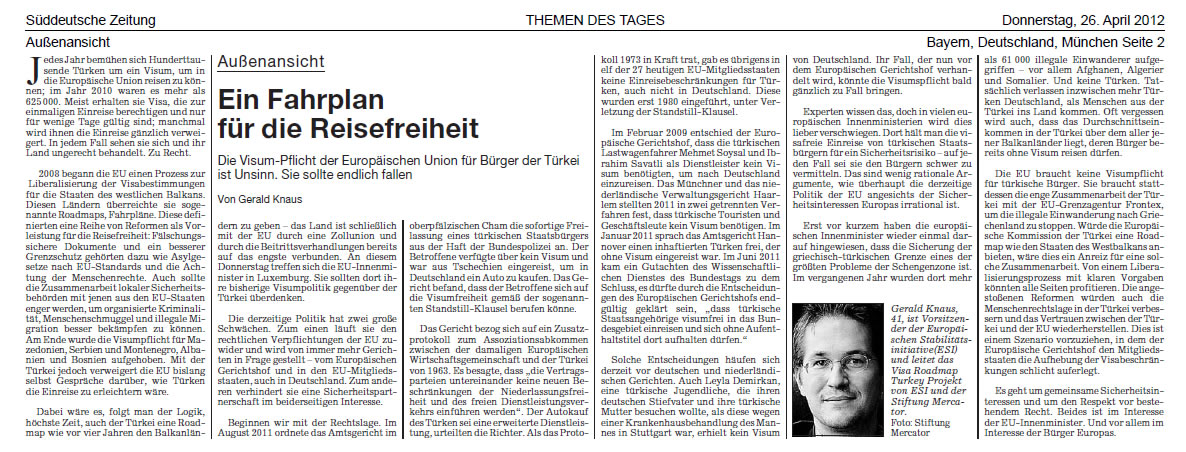
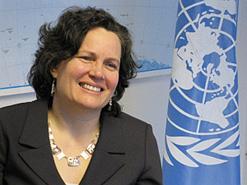

 On 14 June 1985, the Schengen Agreement on the gradual abolition of checks at the common borders between Belgium, France, Germany, Luxembourg and the Netherlands, was signed on board the cruise ship ‘Princesse Marie-Astrid’, moored at Schengen, Luxembourg. Photo: plaza.lu
On 14 June 1985, the Schengen Agreement on the gradual abolition of checks at the common borders between Belgium, France, Germany, Luxembourg and the Netherlands, was signed on board the cruise ship ‘Princesse Marie-Astrid’, moored at Schengen, Luxembourg. Photo: plaza.lu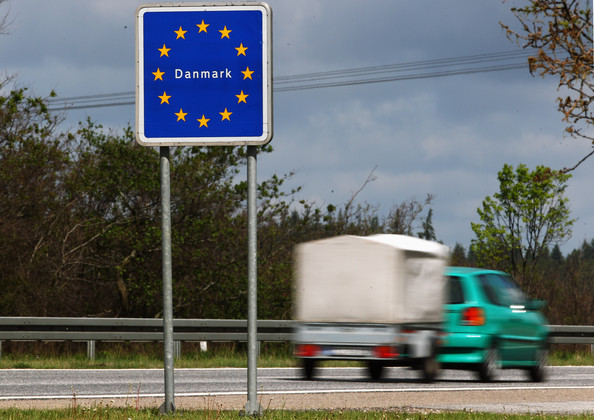 The Danish border with Germany
The Danish border with Germany

